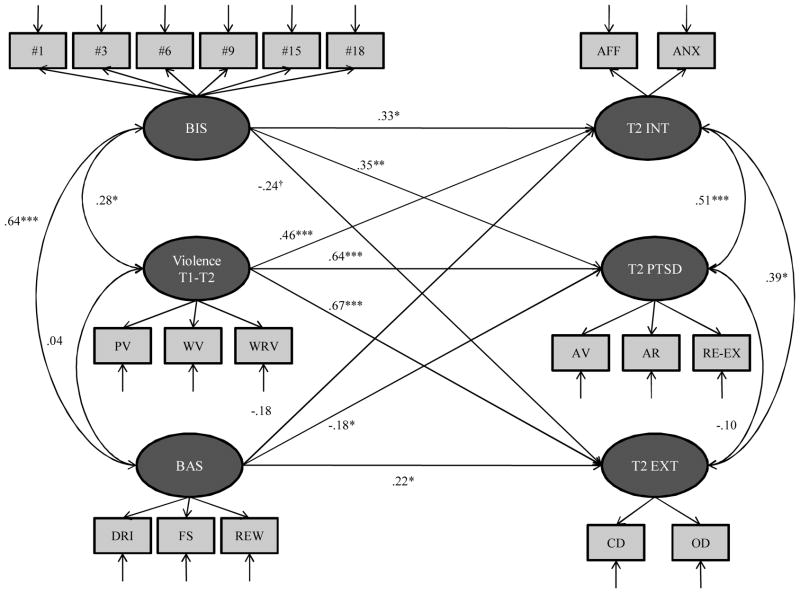Figure 1.
BIS/BAS Direct Effects Mode
Note: χ2 (179) = 220.484, p=.019, Robust CFI = .970, RMSEA = .037 (90% CI = .016–.053), and SRMR = .052. Measured variables of youth age, sex, and Time 1 Total Problems not depicted in the diagram. BIS = Behavioral Inhibition; #1-18 are individual BIS subscale items; PV=Personal Victimization; WV=Witnessed Violence; WRV=Weapon-related Violence; BAS=Behavioral Approach; DRI=Drive; FS=Fun Seeking; REW=Reward Responsiveness; T2 INT = T2 Internalizing Problems; AFF=Affective Problems; ANX=Anxiety Problems; T2 PTSD= PTSD symptoms at T2; AV=Avoidance; AR=Arousal; Re-Ex=Re-experiencing; T2 EXT=T2 Externalizing Problems; CD=Conduct Disorder Problems; OD=Oppositional Defiant Problems. *p<.05, **p <.01, ***p<.001, †p<.10

